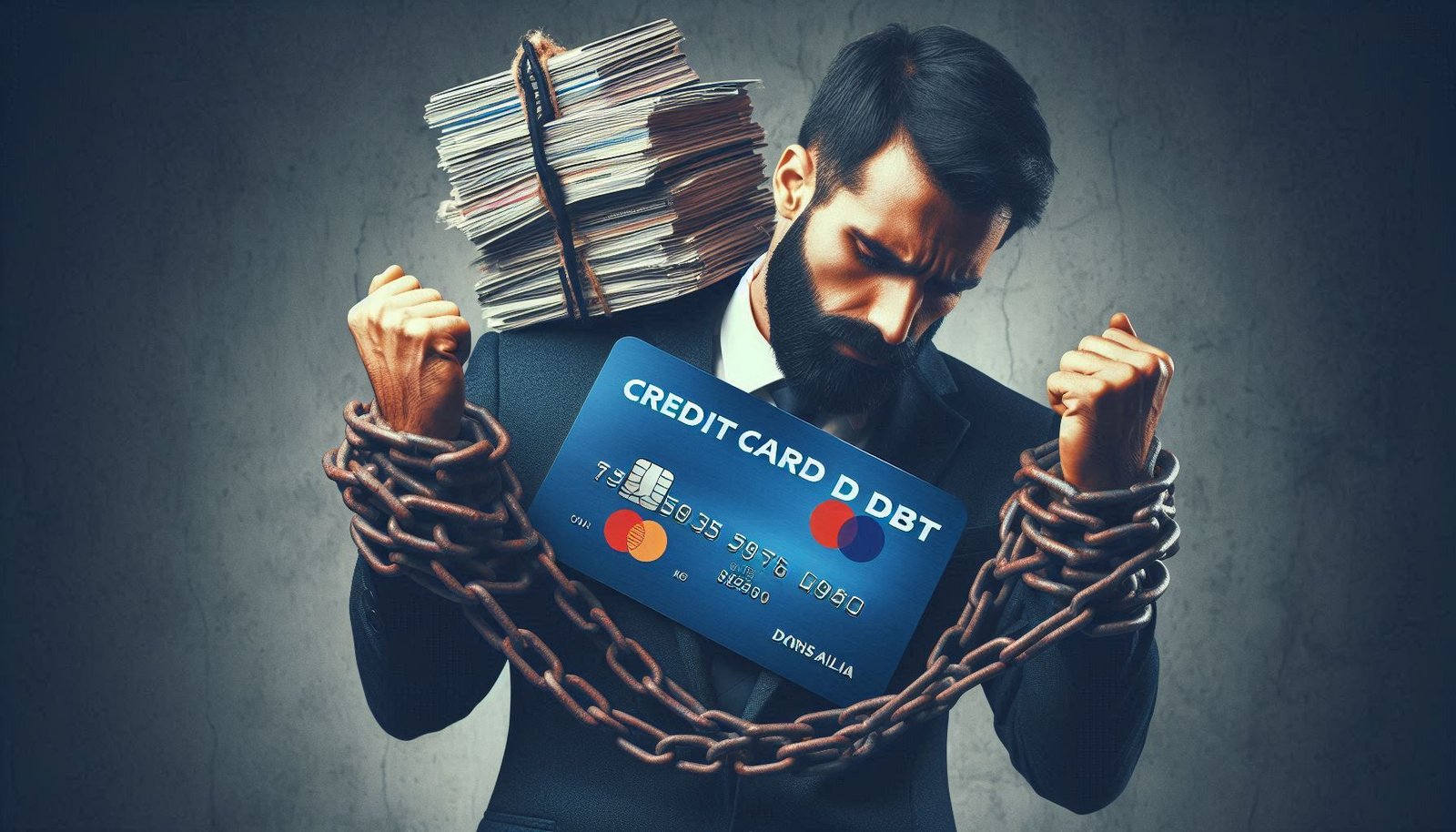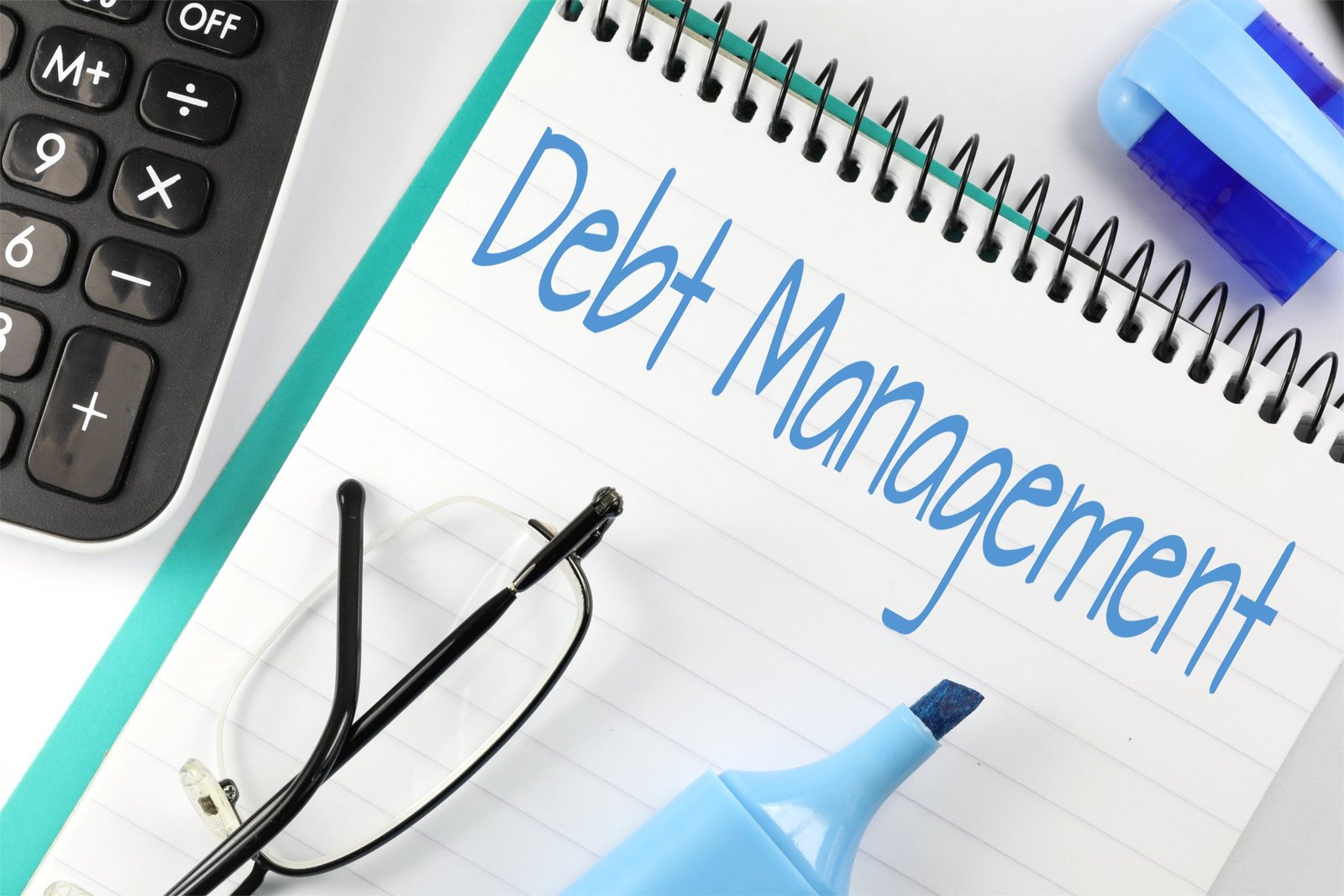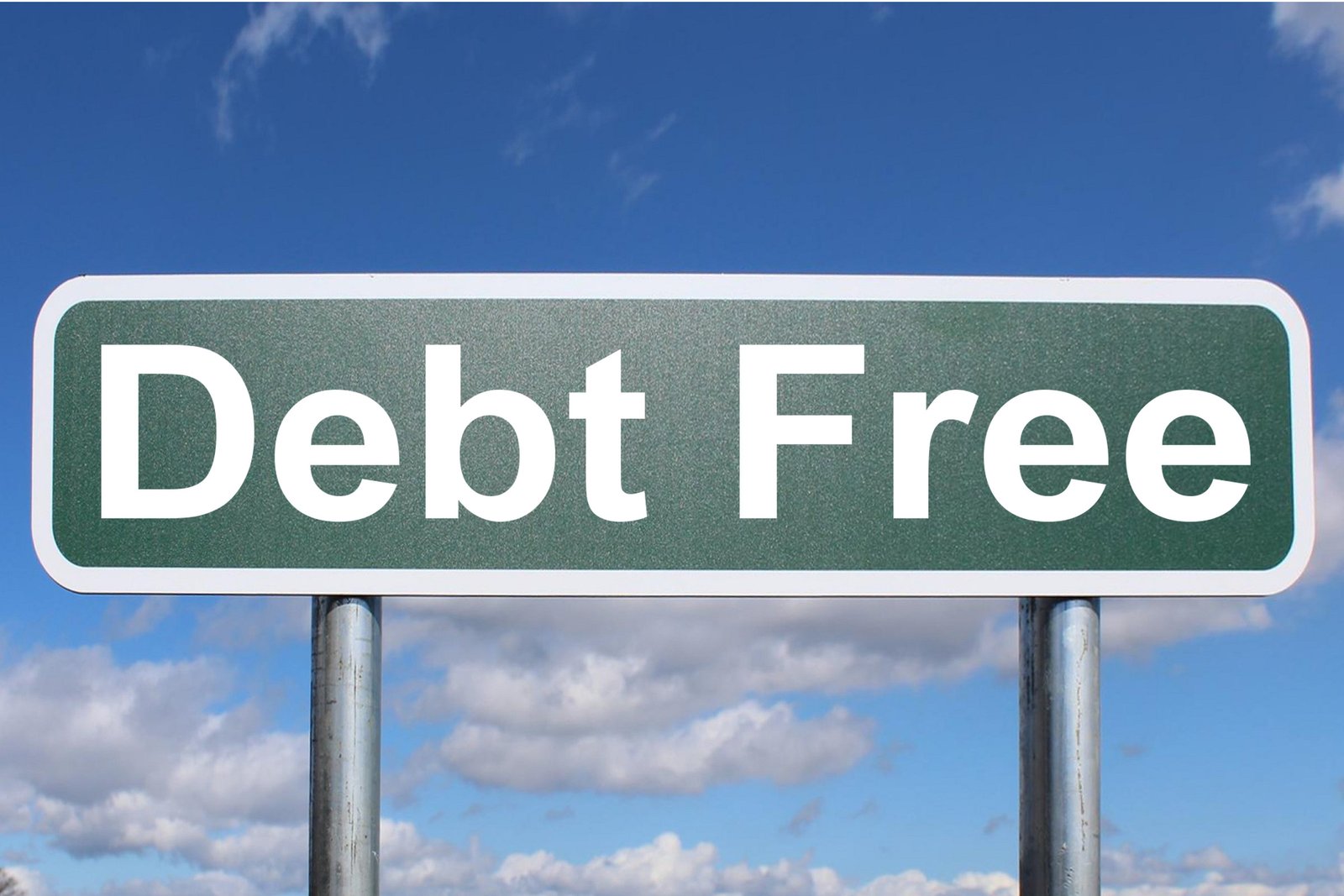Understanding Debt Management
Dealing with debt can feel like untangling a pile of spaghetti. Whether it’s student loans, credit cards, or a mortgage breathing down your neck, getting a grip on managing debt is super important to get your money matters back on track.
Debt Management Overview
Debt management? It’s all about making a game plan for your money to tackle what you owe. Sometimes, this means teaming up with a credit counseling company to whip up what’s called a Debt Management Plan (or DMP for short). Think of a DMP as your personal roadmap that helps you ditch debt in three to five years (Investopedia).
So, what’s in a DMP? Here’s the scoop:
- Budget Creation: Ringmastering your cash flow by examining what comes in and what goes out to set aside money for debt payments.
- Debt Consolidation: Wrangling a bunch of debts into one neat, monthly package. More deets in our article on debt consolidation options.
- Negotiated Terms: Getting a sweet deal by talking down interest rates or nixing extra fees, making it simpler to knock down that debt mountain.
- Monthly Payments: Laying down a steady monthly payment plan that fits nicely within your monthly budget (InCharge.org).
These steps not only help you stay on top of your payments but also set you on the fast track to being debt-free.
Importance of Debt Management
Why should you care about debt management? It’s like having a life jacket in a sea of bills—keeps you afloat and cuts down that debt-tense stress.
- Lower Monthly Payments: Your wallet gets a breather with slashed interest rates—go from a head-spinning 25%-30% to a chill 8% (Debt.org).
- Improved Credit Scores: Pay on time regularly, and watch your credit score climb. This boost can open doors to better financial perks later.
- Avoid Bankruptcy: Managing debt decently helps dodge the bankruptcy bullet, keeping your financial peace.
- Long-Term Financial Stability: Mastering a debt management plan blesses you with budgeting smarts and money discipline for the long haul (Bankrate).
A well-executed debt game plan makes dealing with different debt types more manageable:
- Student Loans: It’s a brain twister, but there are ways to tame those unruly student debts. Check our piece on student loan debt management for tricks.
- Credit Card Debt: Taming those sky-high credit card rates with a DMP can get you on that debt-free road faster. Peek at dealing with credit card debt for more nuggets.
Taking the reins on your debt ensures you’re not just winging it with your finances. It’s the first step towards a brighter, slicker financial future. For more pointers and savvy notions on reining in debt, drift over to our debt management strategies.
Debt Relief Programs
Wading through the sea of debt relief options can feel overwhelming. Getting your head around these choices is a big ol’ step in putting your finances back on solid ground.
Pros and Cons of Debt Relief
Debt relief programs can help shrink your debt mountain by cutting interest rates, tweaking payment terms, or even waving goodbye to some of what you owe. But, like everything, there are ups and downs to consider.
Pros:
- Lower Interest Rates: Some programs can slash those hefty interest rates.
- Easier Payments: Adjusted payment terms mean less sweating over monthly bills.
- Debt Cancellation: Sometimes, a bit of that debt might just disappear.
Cons:
- Fees: Watch out for those sneaky fees that can stack up.
- Credit Score Drama: Joining a debt relief program might put a dent in your credit score.
- Courtroom Shenanigans: Creditors might take you to court over unpaid dues.
Want the nitty-gritty? Dive into this detailed guide from Bankrate.
Debt Consolidation Explained
Debt consolidation’s all about rolling multiple debts into one big bill, making life simpler, and reducing stress. You can tackle this by snagging a loan or grabbing a credit card that doesn’t hit you with interest right off the bat (Bankrate).
Common Methods:
| Method | Description |
|---|---|
| Loan | Snag a personal loan to squash lots of debts at once. |
| Balance Transfer Credit Card | Shift debt to a card with a dreamy low or 0% intro rate. |
Consolidation can ease the payment pain, but knowing the rules and picking the right way for you is key. For more on merging debts, hop over to our debt consolidation options page.
Debt Settlement Process
Debt settlement is about clearing hefty debts for less than owed by handing over a chunky lump sum. Sounds nice, but there’re fees and risks attached (Bankrate).
Steps Involved:
- Negotiation: You, or a pro, haggles with creditors to lower the amount due.
- Lump-Sum Payment: Part with a large chunk of cash to settle up.
- Courtroom Threats: Legal risks loom as creditors may sue over unpaid debts.
Look before you leap when it comes to debt settlement. For more advice on tackling what you owe, check out our reads on dealing with credit card debt and student loan debt management.
Debt relief programs pave the way to shedding financial chains. By weighing the highs and lows, understanding consolidation magic, and knowing the debt settlement scoop, you’re more ready than ever to master your debt. For more smart moves, meander over to our debt management strategies hub.
Credit Counseling
Got a pile of unpaid bills staring at you like an episode of reality TV gone wrong? Credit counseling might just be your financial lifeline. It’s like having a wise old friend who knows his stuff about money, guiding you to shore when you’re thrashing in debt.
Benefits of Credit Counseling
Credit counseling brings more than just advice—it’s a toolkit for tackling those nasty debts that won’t quit. So how does it help, you ask? Let’s break it down.
- Wise Wags and Money Chats: Credit counseling agencies hire folks who speak fluent ‘dollar’. They know the tricks of the trade and can help stitch together a budget that suits your situation like a tailor-made suit.
- Bargaining with the Bill Lords: Sometimes, your credit counselor will charm your creditors into reducing the interest rates or even cutting some slack on fees. This means less of your hard-earned cash is thrown away on high fees. (Bankrate)
- One Bill to Rule Them All (DMPs): Join a Debt Management Plan, and you’ll pay off debt as one easy, streamlined payment that would make even your grandma proud. Your counselor works the magic with creditors for better terms, helping you steer clear of bankruptcy. (Experian)
- Drop Those Rates: With a credit counselor on your side, those hefty interest rates might just deflate like a balloon pricked by a pin. It makes your debt mountain turn into a debt molehill. (InCharge.org)
- Money Mojo Masterclass: Along the way, you’re not just clearing debt—you’re earning yourself an honorary degree in financial savvy, which helps keep you from falling back into debt in the future.
Working with Financial Experts
Partnering with financial hotshots offers a personal touch that goes beyond bot calculators and spreadsheet hell.
- Crunching Numbers & Plotting Plans: Start with a full financial scan, checking out all your monetary comings and goings. This no-judgment audit is ground zero for getting your wallet in order.
- Budget Bootcamp: You and your counselor whip up a budget that lets you pay bills AND still keeps your lights on. It’s like creating a custom-financial GPS that guides you through your money maze.
- Talks with the Money Men: Your credit counselor chats up creditors like a Peace Corps volunteer in action, pushing for lower interest and nixing fees. It’s all part of the debt consolidation dance.
- Keeping Tabs: These agencies don’t leave you hanging. They check in regularly to see if you’re on track or if the plan needs a tweak here and there. It’s like having a fitness coach who’s there with pom-poms cheering you on.
- Picking the Perfect Fit: It’s vital to scope out credit counseling agencies thoroughly. Stick with legit non-profits to dodge scamsters. Protect your neck! (Investopedia)
| Feature | Credit Counseling | DIY Debt Management |
|---|---|---|
| Professional Guidance | Heck yes | Nada |
| Creditor Negotiations | Absolutely | Maybe, not as great |
| Budget Planning | Yep | Yep |
| Monitoring and Support | For sure | No way |
| Cost | Got fees | Freemium |
Choosing credit counseling gives you a structure, a battalion leader in this fight against debt. Ready to get the full scoop? Check out our debt management strategies and hacks for taming credit card monsters.
Debt Management Strategies
Wrestling with finances? You ain’t alone, but don’t worry—by getting clued up on debt management, you can start paving the way towards a stress-free future. It’s all about piecing together a game plan that’ll let you tackle those pesky debts and help you on your way to long-term financial stability.
Debt Management Plans
So, you’ve heard of debt management plans (DMPs), right? They’re all about setting up a straightforward strategy to deal with your debts, usually taking somewhere between three and five years to get across the finish line. During that time frame, you need to promise not to splurge on new credit, and possibly even say bye to some of your credit cards. The folks over at Investopedia spill the beans about how DMPs can cut down those sky-high interest rates, making your monthly dues a whole lot easier to handle.
| Feature | Details |
|---|---|
| Duration | 3-5 years |
| Monthly Fees | $25 – $55 |
| Interest Rate Drop | From 25%-30% to ~9% |
| Initial Set-up Fee | Changes by state |
If you’re nosey for more info on other debt management strategies, you can snoop around our site.
Budgeting for Debt Control
Let’s get real for a sec—budgeting is your secret weapon when it comes to tackling debt. By setting up a budget, you can keep tabs on your earnings and see what’s eating your cash, while finding ways to stash more cash for tackling debt. It all starts with jotting down every penny you earn and all those dreaded expenses. Give your spending some priority; make sure your necessities are covered, and then focus on nailing those debt payments.
Steps to Craft Your Budget:
- Tally Up Your Income – Don’t skip out on anything, from your main gig to side hustles.
- Figure Out Fixed Costs – Those never-changing bills like rent and insurance.
- Track Those Wobbly Expenses – Daily buys like groceries and entertainment.
- Slay Unnecessary Spending – Cut out non-essentials with a ruthless attitude.
- Channel Cash to Debt – Make clearing debts a top priority.
Curious about wrangling student loans or credit card debts? Head over to our sections on student loan debt management and coping with credit card debt.
Debt Snowball vs. Debt Avalanche
Okay, what’s with snowballs and avalanches when we’re talking debt? These are fancy terms for two main strategies for dealing with multiple debts. Choosing the right one depends on you—like whether you wanna see smaller debts vanish first or save hard-earned bucks by cutting interest costs.
Debt Snowball Method:
Here’s the scoop: this method’s all about ticking off your itty-bitty debts first while just keeping up with the bigger ones. Knock over those small hurdles, and watch your confidence (and momentum) build up, readying you to tackle the monstrous ones.
Roll Through Debt Snowball:
- Lineup debts from smallest to biggest.
- Zap the smallest ones first.
- Shift whatever money from your conquered debt to the next in line.
Debt Avalanche Method:
Opposite to the snowball, the avalanche wants you to topple the heavy-hitters first—those with the towering interest rates. It might not have the instant satisfaction, but it’s all about saving you interest money and shaving down payoff time.
Tips for the Debt Avalanche:
- Sort debts by interest rate, from the steepest to the shallowest.
- Aim to down the highest-interest villain first.
- When it’s vanquished, move on to the next one.
| Method | Focus | Advantage |
|---|---|---|
| Debt Snowball | Start with the little guys | Kickstarts motivation with quick wins |
| Debt Avalanche | Take on the big interests | Cuts down on interest costs |
Need more tricks up your sleeve? Check out our piece on debt consolidation options.
Putting these debt-busting maneuvers in motion can make a real difference on your road to financial freedom. When you make smart moves with tools like debt management plans, savvy budgeting, and the right repayment strategy, you’re better armed to get those debts off your back sooner rather than later.
Implementing Debt Consolidation
Using Balance Transfers
Drowning in those pesky high-interest credit card fees? Balance transfers might just be your lifeline. It’s about taking all (or some) of that sky-high interest debt and parking it on a fresh card that’s much friendlier on the pocket, often flaunting an introductory 0% rate (Bankrate).
This way, you’re slicing those interest costs, letting you tackle your debt mountain faster. Here’s the down-low on how balance transfers can help:
| Details | Information |
|---|---|
| Average Interest Rate Before Transfer | 25% – 30% (InCharge.org) |
| Introductory Interest Rate After Transfer | 0% – 5% |
| Duration of Introductory Rate | 6 – 18 months |
To unfurl more tricks on handling credit card debt, check our section on dealing with credit card debt.
Consolidating Multiple Debts
Got a bunch of debts driving you nuts? Bundling them into a single shiny new debt just might be your saving grace. It means handling just one payment instead of juggling several (Bankrate).
Here’s how you can go about it:
- Personal Loans: Grab a new loan with a better rate to wipe your slate clean. It usually costs less every month.
- Debt Management Programs: Team up with credit counseling pros who’ll negotiate with your creditors to drop interest rates and ditch those stressful late fees (InCharge.org).
Craving more on this? Peek at our debt consolidation options.
Secured vs. Unsecured Debt
Deciding on a debt plan and feeling a bit like you’re picking between broccoli or peas? Here’s what’s what with secured and unsecured debt:
- Secured Debt: Think of it as debt with a safety net; it’s backed by stuff you own, like your house or car. Because you’ve got skin in the game, lenders charge less interest. Mortgages and car loans fall into this basket.
- Unsecured Debt: No safety net here, just plain trust. This makes things pricey on the interest side. Credit cards and personal loans? Yep, they’re unsecured.
| Type of Debt | Collateral Required | Interest Rate |
|---|---|---|
| Secured | Yes | Lower |
| Unsecured | No | Higher |
Knowing whether you’ve got something at stake can steer you into the right debt dance moves. If you’re itching to learn more, take a gander at our debt management strategies.
Nailing these strategies can really take the edge off your wallet worries, keeping collectors away and your stress levels in check. Plus, consolidating is like a breath of fresh air, helping ease your way into saving more or diving into that investment pool.
Hardship Programs and Bankruptcy
Finding yourself buried under a mountain of debt? You’re not alone, and there’s no need to face it empty-handed. There are two lifelines ready to be thrown your way: hardship programs and bankruptcy. We’re here to steer you through these choices and help you take control of your wallet once again.
Hardship Program Benefits
When life throws curveballs and the bills start to feel like a never-ending nightmare, hardship programs are there to catch you. They’re like a financial breather that gives you some space to sort things out. If your bills are piling up like laundry, this might just be the break you need.
Why Hardship Programs Rock:
- Money Stress Relief: No more sleepless nights over which bill to pay first. These programs can lower what you owe each month. They’ll smooth-talk your creditors into agreeing to friendlier terms.
- Pay Less Interest: Those credit card debts feeling like a bad rash that just won’t go? Hardship programs can scratch that itch by slashing interest rates, easing the monthly squeeze (InCharge.org).
- Bad Juju Protection: Defaulting on your debts not only hurts your credit but can also drag you into legal messes. Hardship programs plot a safer course, steering you clear of those storms.
| Hardship Program Perks | What’s in it for You |
|---|---|
| Money Stress Relief | Smoothing out your monthly dues with creditors. |
| Pay Less Interest | Cutting down those pesky interest rates, easing your load. |
| Bad Juju Protection | Dodging the debt default disaster. |
Feeling like you’re sinking? A Debt Management Plan (DMP) with a nonprofit counseling agency might toss you a lifeline, organizing your payments into manageable chunks over several years (Investopedia). Check out other debt management tricks to suit your financial groove.
Exploring Bankruptcy
When every other avenue feels like a dead-end, there’s bankruptcy. It ain’t pretty, but it’s there when you’ve exhausted other options. A fresh start comes at a price, though, and it’s important to weigh what lies on the other side.
Perks of Going Bankrupt:
- Debt Disappear Act: Bankruptcy can make a chunk of your debt magically disappear, like poof!—gone.
- The Big Pause: As soon as you hit the bankruptcy button, your creditors have to tap the brakes on collection efforts and legal actions.
Two Go-To Bankruptcy Types:
- Chapter 7 Bankruptcy: This is the slash-and-burn method, selling off non-essential assets to clear debts. It’s quick, but it comes with sacrifices.
- Chapter 13 Bankruptcy: More of a long game, this lets you hang onto your stuff while crafting a payment game-plan over a few years.
| Bankruptcy Routes | What They Do |
|---|---|
| Chapter 7 Bankruptcy | Sell assets, erase the rest. |
| Chapter 13 Bankruptcy | Hold onto stuff, new payment roadmap. |
Deciding to file for bankruptcy ain’t light work—it leaves its mark on your credit. But when times are dire, it can offer the breath of fresh air you need to start anew. Always chat with a financial guru to size up the move best suited for you. Dive into how boosting your credit score can set you on the path to lasting financial peace.
Faced with debt decisions, weighing hardship programs against bankruptcy will help illuminate the best path forward. Whether you’re stitching together a sensible payment plan with a counselor, or considering the heavy reset of bankruptcy, proactive steps will guide you out of the debt maze toward a brighter money morrow.
Structuring a Debt Management Plan
Got debt? No worries, creating a debt management plan (DMP) could be your ticket to regaining that oh-so-sweet financial stability. This section is your trusty co-pilot, steering you through the nitty-gritty of setting up a payment schedule and wrangling those monthly payments like a pro.
Creating a Payment Schedule
Think of your payment schedule as the backbone of your debt management journey. Here’s your checklist to build one that won’t make you want to tear your hair out:
- Round Up All Your Debts: First, jot down every single unsecured debt. Yep, we’re talking credit cards, medical bills, and personal loans. It’s important to know that a DMP isn’t for stuff like mortgages or car loans; they’re in a whole different ballpark (Investopedia).
- Know Your Numbers: Get a good grip on your income and what you spend on essentials like rent, utilities, groceries, and getting from A to B. This will tell you what’s left for tackling your debt.
- Set Payment Goals You Can Handle: With a clear picture of your spare cash, decide on a monthly payment you can actually stick to. You’re not setting a world record here; the goal is to keep it realistic so you don’t end up playing catch-up.
- Get Advice from a Credit Guru: A chat with a credit counselor could be a game-changer. They’re pros at talking your creditors into lowering those pesky interest rates, potentially easing your financial burden. Curious about how they work their magic? Peek at our section about working with financial experts.
| Step | What You Need to Do |
|---|---|
| 1. | List out all your unsecured debts |
| 2. | Calculate earnings and essentials |
| 3. | Choose a doable payment amount |
| 4. | Talk numbers with a credit counselor |
Managing Monthly Payments
Now that your plan’s loaded and ready, let’s keep it steady. Here’s your guide to sticking to it like glue:
- Automation is Key: Let technology help with auto-payments. Saves you time and spares you those pesky late fees, all with just a few clicks at most banks.
- Consistency is Your Best Friend: Don’t deviate from your plan. These DMPs usually last about three to five years (Investopedia), so keep your eyes on the prize.
- Put Away the Plastic: If possible, avoid any new credit while you’re on this path. Adding more credit can mess up your carefully crafted plan and stretch out your debt payoff timeline.
- Watch Your Progress: Keep tabs on your statements and credit reports. This not only ensures that payments are recorded but also gives you visible proof of progress which, let’s face it, feels pretty darn good.
- Don’t Ghost Your Creditors: Keep the line open with your creditors. If you’re struggling, tell them. You might find they’re surprisingly willing to tweak things if you’re upfront.
Following these steps means you’re taking charge of your debt situation, marching ever closer to a brighter, financially secure future. For more targeted strategies, cruise over to our guide on debt management strategies and learn how to wrangle specific beasts like student loan debt management and credit card debt.
Impact on Credit and Financial Health
Improving Credit Scores
Jumping into a debt management program (DMP) might just be the nudge your credit score needs to rise from the ashes. Think of it as tidying up your debt mess so you can finally see some light at the end of the tunnel. As you start making those reliable, on-time payments to your creditors, your credit history gets a fresh coat of paint. Stick to the program, and you might see your score climb up by 100 points or even more. Now, that’s a reason to celebrate!
| Factor | Contribution to FICO Score |
|---|---|
| Payment History | 35% |
| Total Amount Owed | 30% |
| Length of Credit History | 15% |
| New Credit | 10% |
| Credit Mix | 10% |
So, here’s the tea: Thirty percent of your FICO score is about how much debt you’re lugging around. With a DMP, you’ll be chipping away at that debt until it’s history—usually within 3 to 5 years. And with each chunk paid off, your score gets a little happier.
Long-Term Financial Stability
Long-term money peace isn’t just about getting a shiny credit score. It’s turning your finances into your best friend and shaking off any anxieties about future mishaps. A DMP helps you get there by keeping you on track with consistent debt smackdowns.
- Debt Reduction: Keeping up with those payments trims down your debt, easing your money stress.
- Interest Savings: DMPs often come with lower interest rates, saving you some serious cash.
- Financial Discipline: Sticking to a plan builds good money habits that last.
Finishing a debt management plan isn’t a cakewalk—only 55% to 70% make it all the way through, largely due to the interest rates knocking about during the program. Trim those rates down, and you’re far more likely to finish on a high note—setting you up for financial strength that lasts.
To keep this good thing going, team up your DMP with some budgeting and smart planning. Check out tips on tackling debt here. Need to wrestle with that pesky credit card debt? Get pointers here, or if student loans are your headache, help is just a click away here. Bundle it all together for a financial future as sturdy as a rock.






